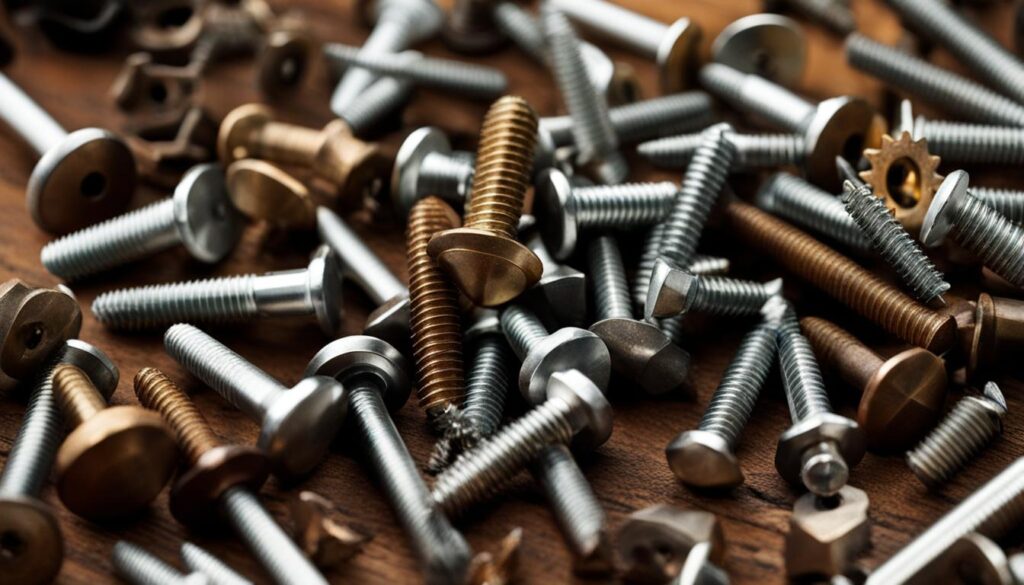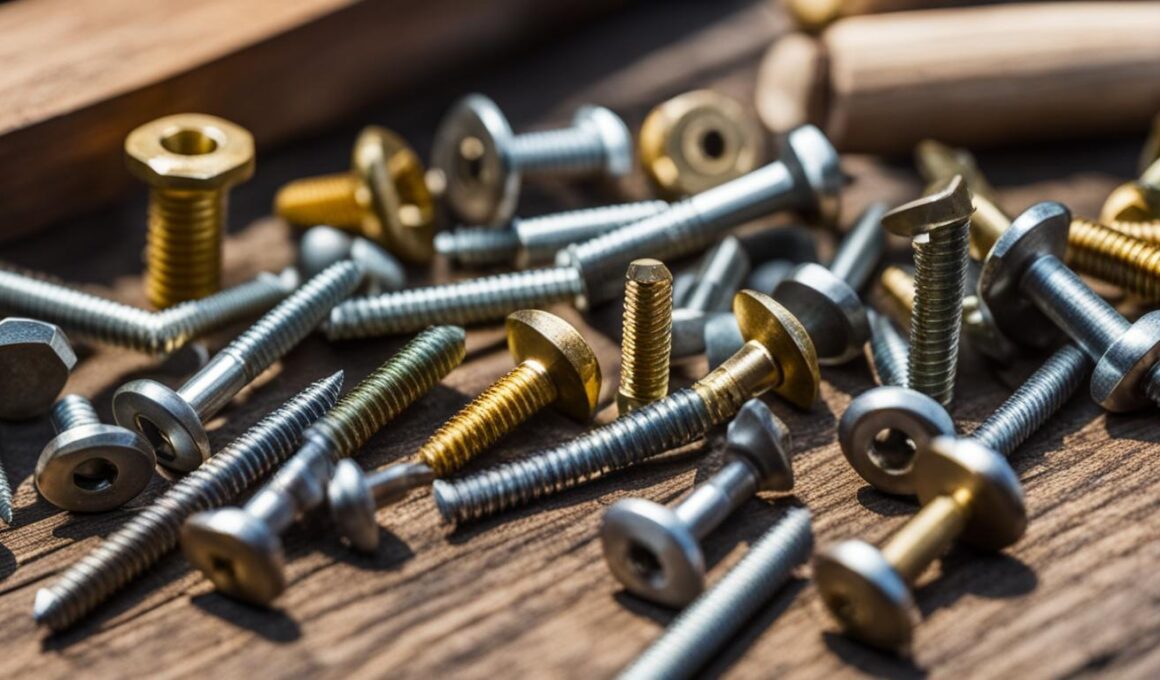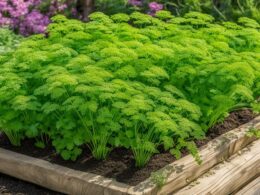Building a raised garden bed is a popular option for gardeners looking to create a healthy growing environment. However, choosing the right screws is crucial to ensure the longevity and stability of the bed. The right screws should be resistant to corrosion and compatible with treated lumber. It’s important to consider the design and construction of the bed, as well as the specific needs of your plants.
Post Summary:- Choosing the right screws is essential for the longevity and stability of your raised garden bed.
- Opt for screws that are resistant to corrosion and compatible with treated lumber.
- Consider the design and construction of the bed, as well as the specific needs of your plants.
- Consult with experts or professionals for recommendations on the best screws for your raised garden bed.
- Investing in high-quality screws will ensure the durability and success of your raised garden bed.
Different Raised Garden Bed Designs
When it comes to building a raised garden bed, there are various designs to consider. Each design offers its own unique aesthetic and functionality, allowing you to choose the one that best suits your gardening needs. Here are four popular raised garden bed designs:
1. Wattle Garden Beds
Wattle garden beds are created by weaving branches and sticks together to form a natural and visually appealing border. This design not only provides structural support but also adds a rustic charm to your garden. Wattle garden beds are ideal for those who prefer a more organic and sustainable approach to gardening.
2. Log Garden Beds
Log garden beds involve arranging logs into a frame, creating a defined and visually striking structure. The use of logs not only adds a rustic touch but also provides excellent durability. This design is perfect for gardeners who want a sturdy and long-lasting raised bed that blends well with the natural surroundings.
3. Wood and Rebar
Wood and rebar designs use wooden boards and rebar to create a robust and versatile raised garden bed. This design offers great flexibility in terms of size and shape, making it suitable for various garden types. The combination of wood and metal provides exceptional strength and stability, ensuring that your raised bed can withstand the test of time.
4. Multi-level Raised Garden Beds
Multi-level raised garden beds are designed with multiple tiers, allowing you to grow different plants with varying water and care needs. This design maximizes space and provides easy access to each level, making it convenient for gardening enthusiasts with limited space. Multi-level raised garden beds are perfect for those who want to create a visually appealing and organized garden.
With these different designs to choose from, you can create a raised garden bed that not only enhances the beauty of your outdoor space but also provides a functional and productive environment for your plants.
Choosing the Right Raised Garden Bed Hardware
When building a raised garden bed, selecting the appropriate hardware is essential for ensuring its durability and functionality. It is crucial to use screws and bolts that are specifically designed for use with ACQ pressure treated lumber to prevent corrosion and maintain the structural integrity of the bed. ACQ pressure treated lumber has become a popular choice for raised garden beds due to its resistance to rot and decay, but it can corrode standard metal fasteners over time. By using corrosion-resistant fasteners, you can enhance the longevity and stability of your raised garden bed.
In addition to selecting the right screws and bolts, incorporating drainage hardware can be beneficial for managing water flow within the raised garden bed. This can prevent waterlogging and help create optimal growing conditions for your plants, especially during heavy rainfall. Drainage hardware can include components such as plastic or metal grids, pipes, or even gravel layers that allow excess water to escape from the bed.
Remember: When choosing raised garden bed hardware, prioritize the use of ACQ-compatible and corrosion-resistant fasteners, and consider incorporating appropriate drainage hardware for optimal plant growth and bed longevity. By investing in quality hardware, you can ensure that your raised garden bed provides a stable and productive environment for your plants for years to come.

| Benefits of Choosing the Right Hardware | Reasons |
|---|---|
| Enhanced Durability | Corrosion-resistant fasteners prevent metal deterioration, ensuring long-lasting stability. |
| Optimal Water Management | Drainage hardware prevents waterlogging, providing better control over water flow. |
| Longevity of the Bed | Using ACQ-compatible fasteners helps prevent degradation of the bed’s structure. |
Step-by-Step Guide to Building a Raised Garden Bed
Building a raised garden bed is a satisfying DIY project that can enhance your gardening experience. Follow these step-by-step instructions to create a sturdy and functional raised bed for your plants:
Gather the Materials and Tools
Before you start building, gather all the necessary materials, including treated lumber or cedar boards, corrosion-resistant fasteners such as deck screws, a saw, drill/driver, driver bit, square, and corner posts for added stability.
Measure and Cut the Parts
Measure and mark the desired dimensions for your raised bed. Use a saw to cut the lumber into the appropriate lengths according to your measurements. Double-check the accuracy of your cuts to ensure a precise fit during assembly.
Assemble the Frame
Begin assembling the frame by attaching the boards together with screws or nails. Use a square to ensure the corners are at right angles. Secure the corners with corner posts for added strength and stability. Repeat this process for each level if you plan to build a multi-level raised bed.
Fill the Bed and Start Planting
Once the frame is complete, fill the raised bed with a suitable soil mix, such as a combination of topsoil, compost, and potting soil. Ensure the soil is level and well-distributed throughout the bed. Now you’re ready to start planting your favorite flowers, herbs, vegetables, or any other plants of your choice.
Building a raised garden bed is a rewarding project that allows you to create an ideal growing environment for your plants. By following these step-by-step instructions and using the right materials and tools, you can construct a raised bed that will provide years of gardening enjoyment.
| Materials | Tools |
|---|---|
| Treated lumber or cedar boards | Saw |
| Corrosion-resistant fasteners (deck screws) | Drill/driver |
| Corner posts | Driver bit |
| – | Square |
The Benefits of Raised Garden Beds
Raised garden beds offer a range of benefits that make them a popular choice for gardeners. Here are some of the key advantages:
- Convenience: One of the main benefits of raised garden beds is their convenience. By elevating the plants, these beds reduce the need for excessive bending and stooping, making it easier for individuals with back issues or limited mobility to tend to their plants.
- Improved Yields: The well-drained and well-aerated soil in raised beds promotes better plant growth and improved yields. The controlled environment allows for better water retention and encourages the roots to access nutrients more efficiently, resulting in healthier, more abundant crops.
- Less Bending, Less Weeding: The elevated height of raised garden beds not only reduces the strain on your back but also helps deter weeds. By creating a barrier between the garden soil and the surrounding ground, raised beds minimize weed growth, saving you time and effort on weeding tasks.
In summary, raised garden beds offer the convenience of reduced bending, improved yields due to enhanced soil conditions, and less time spent on weeding. These advantages make them an excellent choice for gardeners looking to create a productive and low-maintenance growing environment.
Quote:
“The convenience of raised garden beds is a game-changer. I no longer have to bend over for long periods of time, and the improved yields I’ve experienced are truly impressive.” – Sarah, avid gardener
| Benefits | Description |
|---|---|
| Convenience | Reduces bending and stooping, making gardening easier for those with back issues or limited mobility |
| Improved Yields | Well-drained and well-aerated soil promotes healthy plant growth and higher crop yields |
| Less Bending, Less Weeding | Elevated height helps deter weeds, reducing the need for frequent weeding |
By utilizing raised garden beds, you can enjoy these benefits and create a thriving garden with ease.
Treated Lumber and Safety Considerations
When building a raised garden bed, it’s important to consider the type of lumber you use, especially when it comes to its treatment. Treated lumber is commonly used for its durability and resistance to decay, but certain wood preservatives can pose potential health risks. One commonly used treatment is alkaline copper quaternary (ACQ), which has replaced the use of chromated copper arsenate (CCA) due to its safety around edibles.
While ACQ-treated lumber is considered safe, it’s still advisable to follow some health precautions when working with it. It’s recommended to wash your hands thoroughly after handling ACQ-treated wood to minimize any potential exposure to chemicals. Additionally, it’s a good idea to collect and dispose of any sawdust created during the construction process, as this can be a potential source of exposure. Taking these simple precautions can help ensure your safety when using ACQ-treated lumber for your raised garden bed.
If you’re concerned about the potential risks associated with treated lumber, another option to consider is using recycled wood. Recycled wood is less likely to leach chemicals and can be a safer alternative for your raised garden bed. By repurposing wood from previous projects or salvaging wood from other sources, you can create an eco-friendly and chemical-free garden bed.
| Treated Lumber Safety Precautions | Recycled Wood |
|---|---|
| Wash hands after handling ACQ-treated lumber | Less likely to leach chemicals |
| Collect and dispose of sawdust | Eco-friendly option |
| Consider applying a sealant for extra protection | Safe alternative for your raised garden bed |
Applying a sealant to treated lumber can also provide an extra layer of protection. A sealant can help minimize any potential leaching of chemicals and further ensure the safety of your garden bed. When selecting a sealant, choose one that is specifically designed for use with treated wood and follow the manufacturer’s instructions for application.
Overall, by taking the necessary precautions and considering alternatives such as recycled wood, you can prioritize safety while still enjoying the benefits of a raised garden bed.
Soil Selection for Raised Garden Beds
When it comes to building a raised garden bed, choosing the right soil is essential for creating a favorable environment for your plants to thrive. The soil mix you use should provide adequate nutrients, good drainage, and moisture retention. A recommended soil mix for raised garden beds includes a combination of topsoil, compost, and potting soil.
Topsoil serves as the foundation of the soil mix, providing a base of natural minerals and organic matter. It contributes to the overall structure and fertility of the soil. Compost, on the other hand, enriches the soil with essential nutrients and helps improve its moisture-holding capacity. Potting soil is specially formulated with a blend of organic materials that promote optimal plant growth, ensuring healthy root development and nutrient absorption.
It is important to maintain the right proportions when mixing these components. A general guideline is to use approximately 60% topsoil, 30% compost, and 10% potting soil. This ratio allows for a balanced blend of nutrients, moisture retention, and proper drainage. However, depending on the specific needs of your plants, you can adjust the proportions accordingly.
Selecting Organic Materials for Soil Enhancement
In addition to the basic soil mix, incorporating organic materials can further enhance the quality of your raised garden bed soil. Organic materials such as well-rotted manure, leaf mold, and peat moss can increase the soil’s fertility, improve its structure, and enhance water retention.
Quote: “Organic materials provide a natural source of nutrients and help create a healthy soil ecosystem.” – Gardening Expert
When using organic materials, ensure they are well-aged and free from any harmful substances or chemicals. These materials can be mixed into the soil during the bed’s initial construction or added as a top dressing throughout the growing season to replenish nutrients.
Recommended Soil Mix for Raised Garden Beds
| Soil Component | Proportion |
|---|---|
| Topsoil | 60% |
| Compost | 30% |
| Potting Soil | 10% |

What Type of Material Should I Use to Line the Bottom of My Raised Garden Bed?
When selecting raised garden bed bottom materials, consider factors like drainage, durability, and sustainability. Options include landscape fabric, cardboard, newspaper, gravel, or a combination. Each choice offers different benefits, so choose what aligns best with your gardening goals and the plants you intend to grow.
Conclusion
Building a raised garden bed involves careful consideration of design, hardware, and soil selection. By choosing the right screws and construction methods, you can ensure the durability and stability of your raised bed. The benefits of raised garden beds, such as convenience, improved yields, and reduced maintenance, make them a popular choice for gardeners. With proper precautions when using treated lumber and selecting the appropriate soil, you can create a thriving environment for your plants.
What Type of Screws Should I Use If I Want to Add Worms to My Raised Garden Bed?
When adding worms to garden bed, consider using wood screws or decking screws to secure the joints of the raised bed. These types of screws offer durability and resistance to outdoor elements, ensuring that your raised garden bed remains sturdy and able to support the weight of the soil and added worms.
FAQ
What type of screws should I use for my raised garden bed?
It is crucial to use screws that are resistant to corrosion and compatible with treated lumber. Look for bolts and screws specifically designed for ACQ pressure treated lumber.
What are some different designs for raised garden beds?
Some popular designs include wattle garden beds, log garden beds, wood and rebar designs, and multi-level raised garden beds.
Why is the choice of hardware important for raised garden beds?
The right hardware ensures the durability and stability of the bed. Using corrosion-resistant fasteners and adding drainage hardware can reinforce the structure and prevent waterlogging.
What tools do I need to build a raised garden bed?
You will need a saw, drill/driver, driver bit, and a square. These tools will help you cut and assemble the frame of the bed.
What are the benefits of raised garden beds?
Raised garden beds provide convenience, improved yields, and reduced maintenance. They also make gardening easier for individuals with back issues.
Are there any safety considerations when using treated lumber?
It is important to follow health precautions when working with ACQ-treated wood. This includes washing hands and collecting sawdust. Applying a sealant to treated lumber can minimize potential risks.
What type of soil should I use in my raised garden bed?
A recommended soil mix includes topsoil, compost, and potting soil. The ideal ratio is 60% topsoil, 30% compost, and 10% potting soil.









